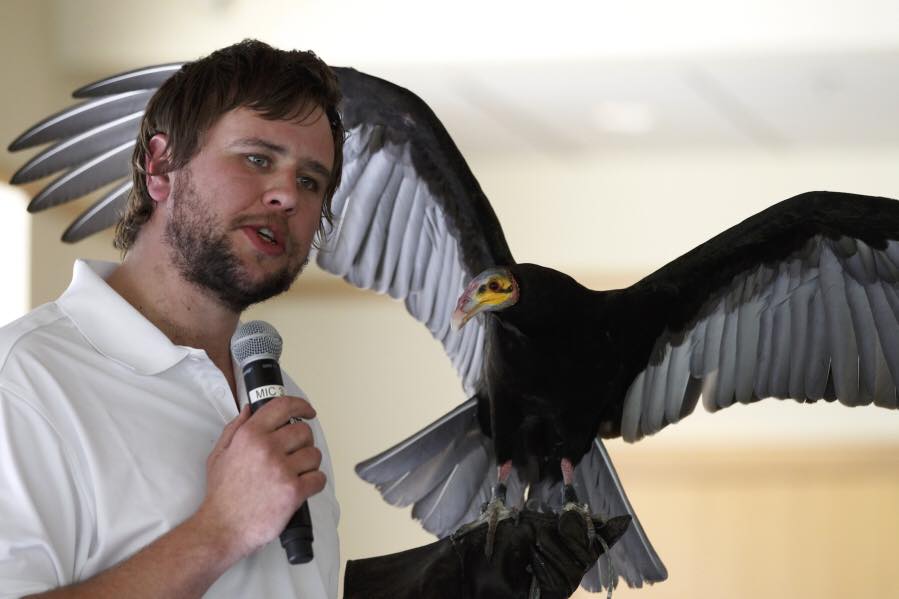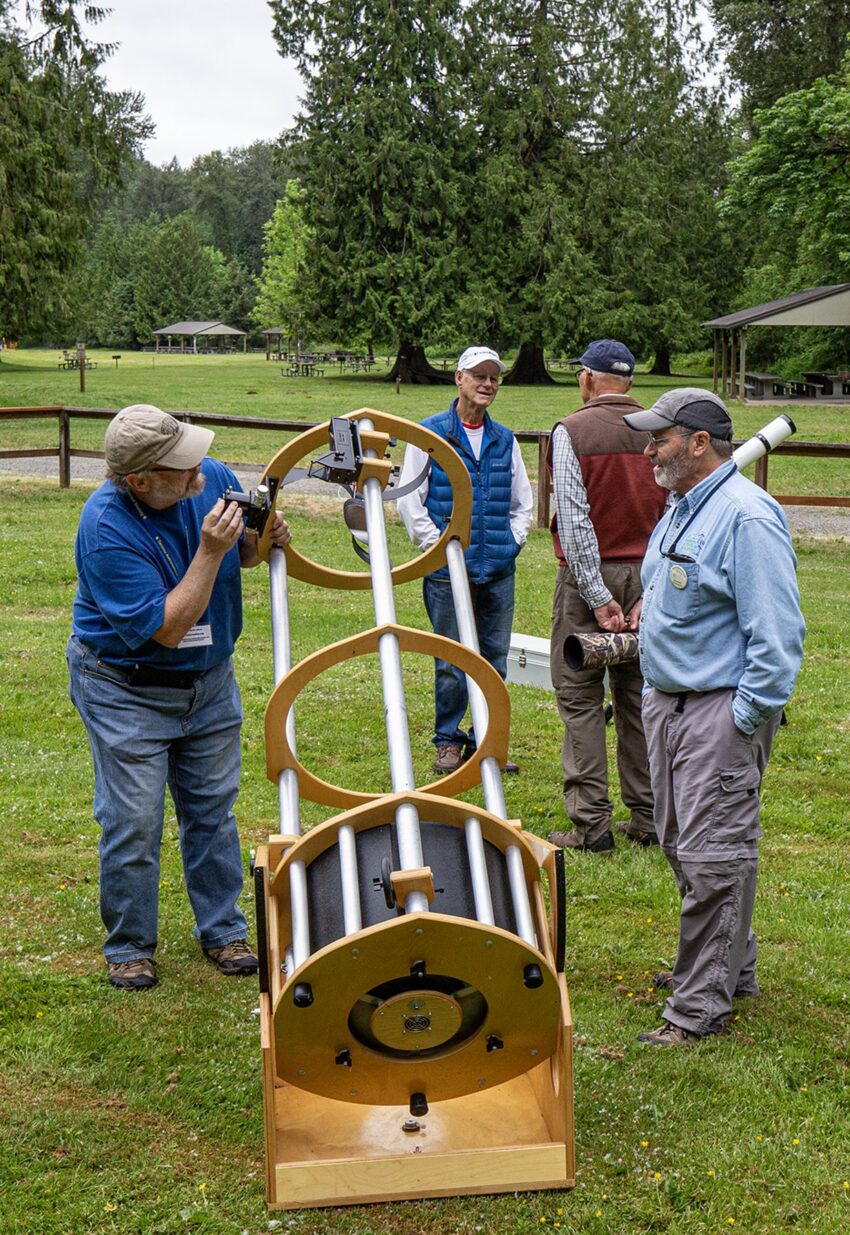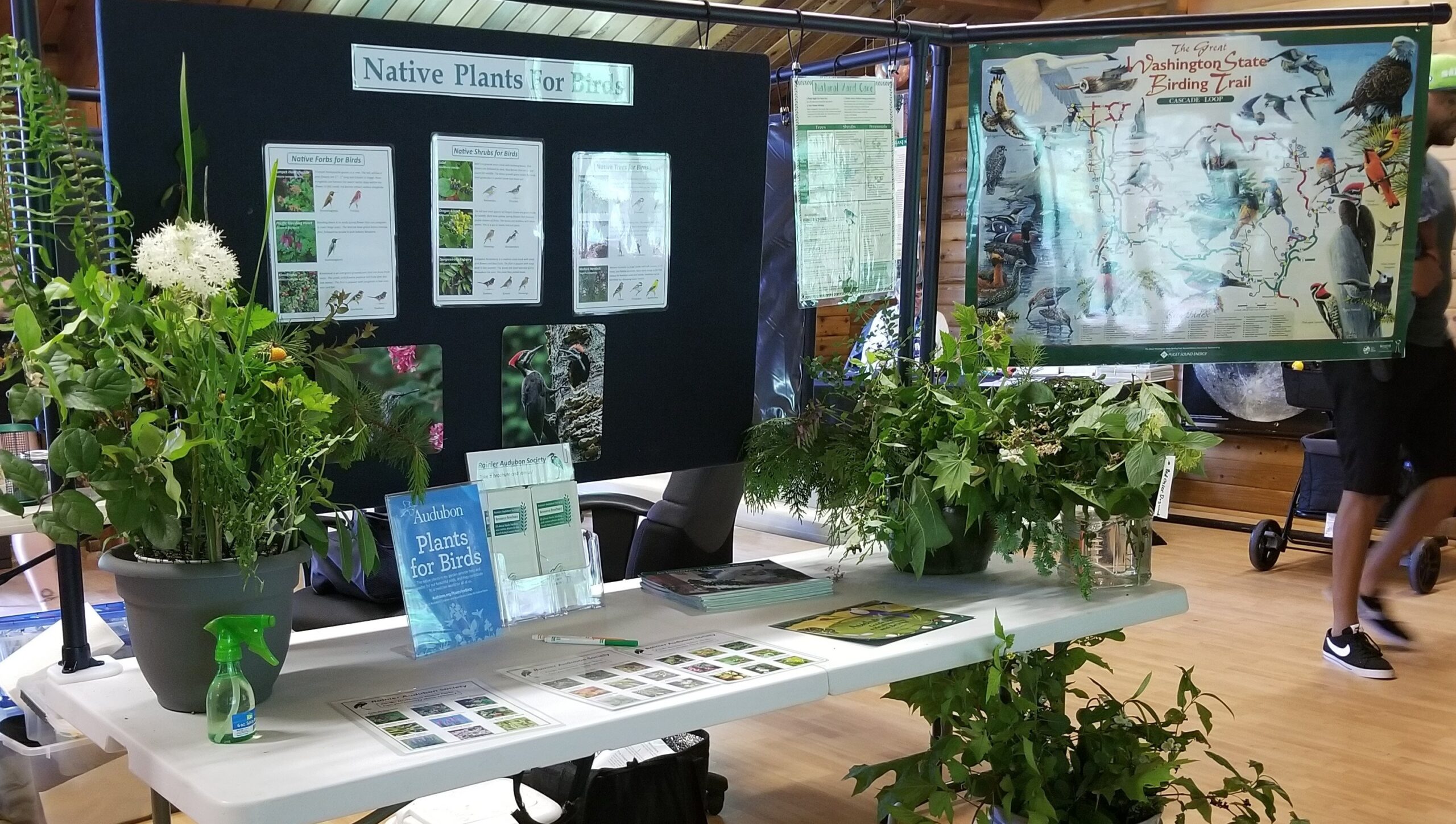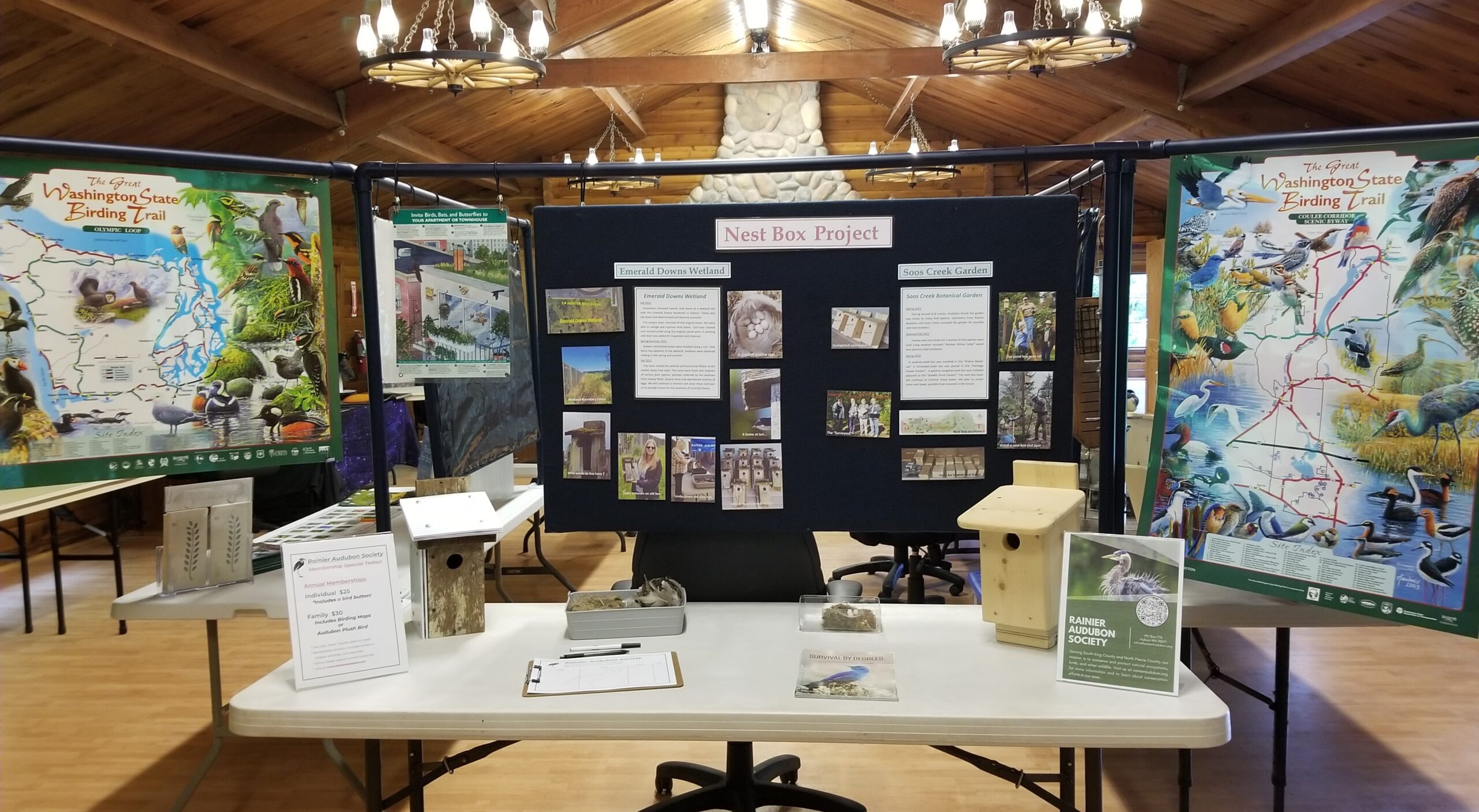
Mewsings from Millie – April 2025

(Reprinted with permission from the Burien Wild Birds Unlimited store.)
Hello and thanks once again for taking time to meander through my maze of musings! I’ve been feeling giddy with thoughts of spring being here.
With the weather becoming nicer people are venturing out into their yards and gardens. There is a Pacific Northwest native plant that’s an absolute hummingbird magnet, Red-flowering Currant, or as gardeners know it, Ribes sanguineum. Both Anna’s and Rufous Hummingbirds just love it! Plant some of this northwest beauty in your yard and you are sure to have the flying jewels of the bird world come for a visit.
Come with me as I ponder intriguing facts about some common backyard birds. A lot of people who come into the store have experienced the beauty of Varied Thrushes, some for the first time. Varied Thrushes visit feeders far more than other thrush species. Populations of Varied Thrushes noticeably change every two or three years. These cycles are likely related to food supplies although has yet to be documented.
Pine Siskins are nomadic and rarely return to the same winter destinations twice. The Siskins visiting your feeder today may not be the ones you saw a few days or weeks ago. Examples of this come from a bird bander in North Dakota, whose marked birds were sighted later the same winter as far away as 450 miles. Another was recaptured three years later in Connecticut – 2,000 miles to the east!
Black-capped Chickadees are tough little birds that do not migrate. During cold weather they have been found to need twenty times more food than they do in summer. Black-capped Chickadees have excellent coping tactics for surviving harsh weather. They cache food and remember where it is hidden. They do this by using the ‘scatter hoarding’ method – one seed at a time is taken to a unique location and stashed. Chickadees have dense winter plumage, diligently find well-insulated roosting cavities, and can perform regulated hypothermia to conserve energy.
A close cousin to the Black-capped Chickadee, the Chestnut-backed Chickadee is the smallest member of its family. Chestnut-backed Chickadees lack the whistled song of other chickadees, but make up for this by the complexity of its ‘chick-a-dee’ calls. Unlike its cousins, the Chestnut-backed is not a scatter hoarder. Insects and arthropods make up about 65% of its diet while seeds and plant material make up the remaining 35%.
The Red-breasted Nuthatch will line the entrance to its nesting cavity with drops of sticky conifer resin. It is thought that this may be a tactic to discourage predators or cavity competitors. The nuthatch avoids the resin by diving directly into the nesting cavity without touching the sides of the entry hole.
At about 1/5 of an ounce, a single Bushtit weighs only as much as a quarter, ranking them among the world’s smallest songbirds. Small size usually means high energy and Bushtits are no exception. They will eat up to 80% of their bidy weight during cold weather. Bushtits are well known for their ‘confusion chorus’. When a predator is detected – usually a hawk – a Bushtit gives an alarm note to alert the rest of the flock. Then all birds in the flock immediately make a monotonous trilling sound that makes it very difficult to pinpoint the location of any individual bird.
The American Goldfinch is very dependent on Thistle for both food and nesting. It is one of the latest breeding songbirds, waiting to nest until mid-to-late summer when Thistle seeds and down are readily available. Unlike many birds, American Goldfinches molt their body feathers twice a year, in the spring before breeding and again in the fall after nesting.
Perhaps the next time you see one of these birds in your yard you’ll recall one of these facts and continue to appreciate just how amazing our feathered friends are!
Until next time,
Millie, the Muse of Mews




